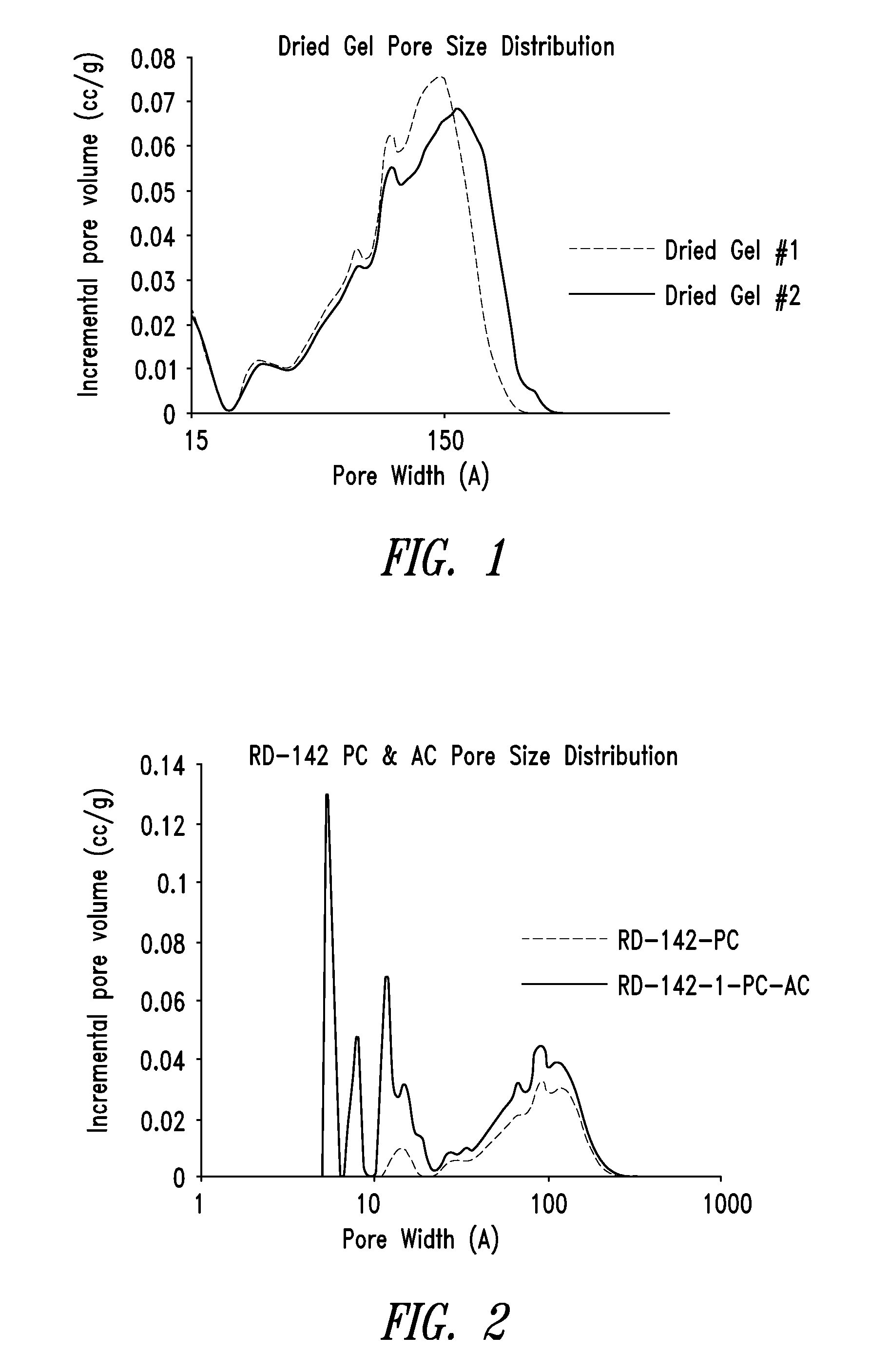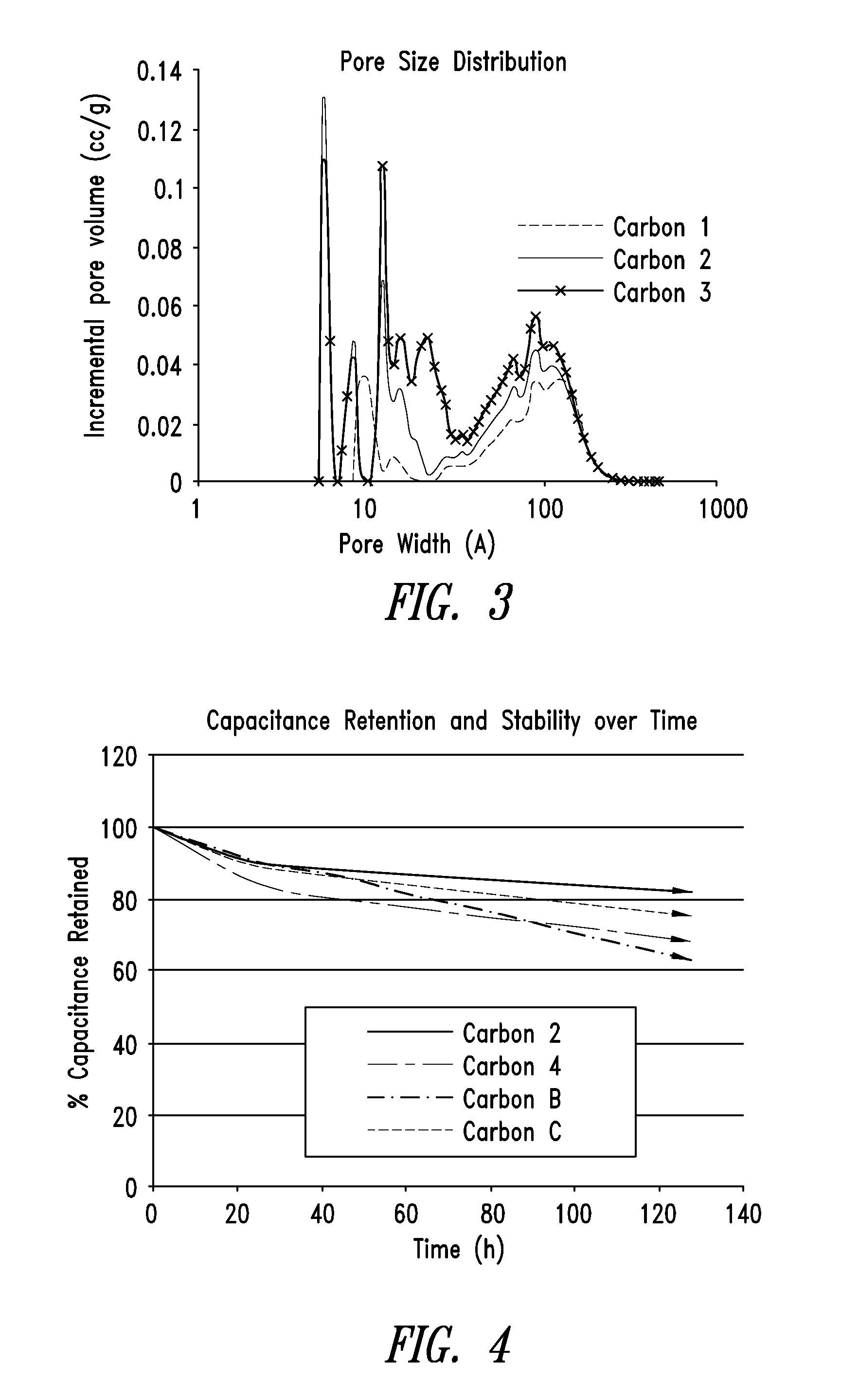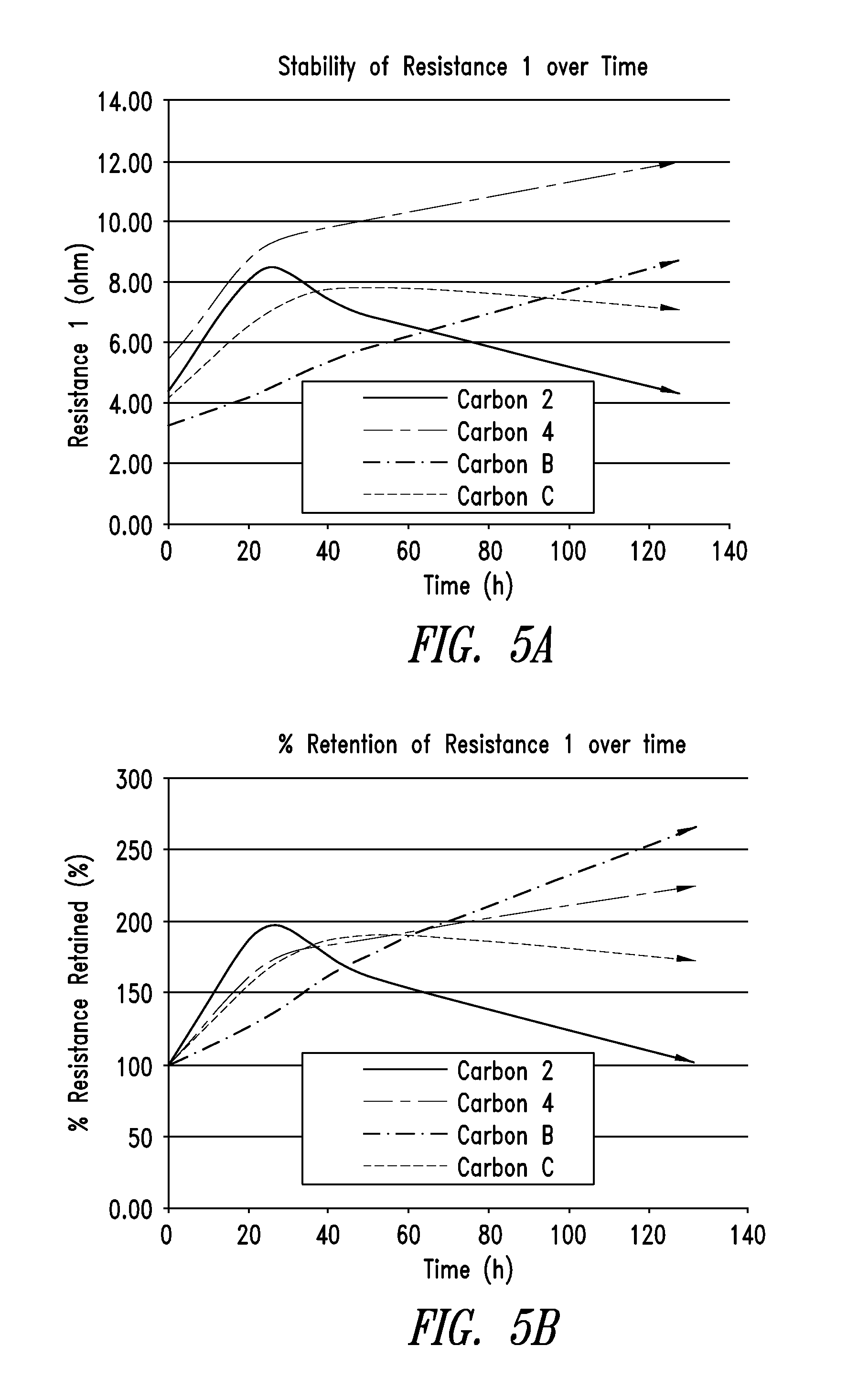Carbon materials comprising enhanced electrochemical properties
a technology of carbon materials and electrochemical properties, applied in the field of carbon materials, can solve the problems of reducing performance, edlcs and carbon-based batteries, repeated charge/discharge cycles, and reducing performance, so as to increase the power density, reduce the ion resistance, and reduce the ion mobility
- Summary
- Abstract
- Description
- Claims
- Application Information
AI Technical Summary
Benefits of technology
Problems solved by technology
Method used
Image
Examples
example 1
Preparation of Dried Polymer Gel
[0287]A polymer gel was prepared by polymerization of resorcinol and formaldehyde (0.5:1) in a water / acetic acid solvent (75:25) in the presence of ammonium acetate catalyst. The resorcinol to solvent ration (R / S) was 0.3, and the resorcinol to catalyst ratio (R / C) was 25. The reaction mixture was placed at elevated temperature (incubation at 45° C. for about 6 h followed by incubation at 85° C. for about 24 h) to allow for gellation to create a polymer gel. Polymer gel particles were created from the polymer gel and passed through a 4750 micron mesh sieve. The sieved particles were flash frozen by immersion in liquid nitrogen, loaded into a lyophilization tray at a loading of 3 to 7 g / in2, and lyophilized at approximately 50 mTorr. The time to dry (as inferred from time for product to reach within 2° C. of shelf temperature) varied with product loading on the lyophilizer shelf.
[0288]The mass loss on drying the polymer gel was 73.4%. The surface area ...
example 2
Preparation of Pyrolyzed Carbon Material from Dried Polymer Gel
[0289]Dried polymer gel prepared according to Example 2 was pyrolyzed by passage through a rotary kiln at 850° C. with a nitrogen gas flow of 200 L / h. The weight loss upon pyrolysis was determined to be 56.2%
[0290]The surface area of the pyrolyzed dried polymer gel was examined by nitrogen surface analysis using a surface area and porosity analyzer. The measured specific surface area using the standard BET approach was 726 m2 / g, the total pore volume was 0.71 cc / g and the tap density was 0.42 g / cc. Carbon materials comprising different properties (e.g., surface area, pore structure, etc.) can be prepared by altering the pyrolysis conditions (e.g., temperature, time, etc.) described above.
example 3
Production of Activated Carbon
[0291]Pyrolyzed carbon material prepared according to Example 2 was activated a batch rotary kiln at 900° C. under a CO2 for 660 min, resulting in a total weight loss of 64.8%.
[0292]The surface area of the activated carbon was examined by nitrogen surface analysis using a surface area and porosity analyzer. The measured specific surface area using the BET approach was 1989 m2 / g, the total pore volume was 1.57 cc / g and the tap density was 0.28 g / cc.
[0293]FIG. 2 shows an overlay of the pore size distributions of the pyrolyzed carbon material of Example 2 and the activated carbon material of Example 3. Note that the pore size distribution for the activated carbon was measured on a micromeritics ASAP2020, a micropore-capable analyzer with a higher resolution (lower pore size volume detection) than the Tristar 3020 that was used to measure the pore size distribution for the pyrolyzed carbon.
[0294]From the DFT cumulative volume plot for the activated carbon m...
PUM
| Property | Measurement | Unit |
|---|---|---|
| atomic numbers | aaaaa | aaaaa |
| BET specific surface area | aaaaa | aaaaa |
| atomic numbers | aaaaa | aaaaa |
Abstract
Description
Claims
Application Information
 Login to View More
Login to View More - R&D
- Intellectual Property
- Life Sciences
- Materials
- Tech Scout
- Unparalleled Data Quality
- Higher Quality Content
- 60% Fewer Hallucinations
Browse by: Latest US Patents, China's latest patents, Technical Efficacy Thesaurus, Application Domain, Technology Topic, Popular Technical Reports.
© 2025 PatSnap. All rights reserved.Legal|Privacy policy|Modern Slavery Act Transparency Statement|Sitemap|About US| Contact US: help@patsnap.com



